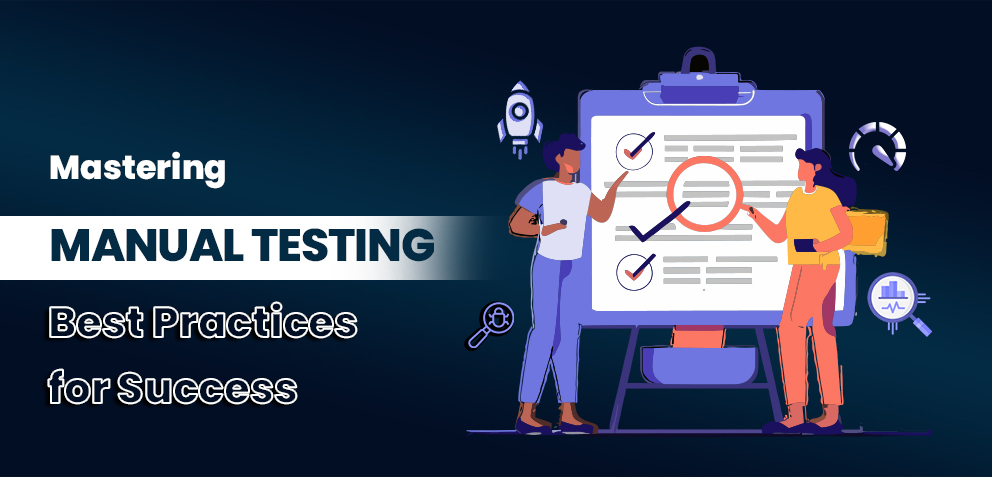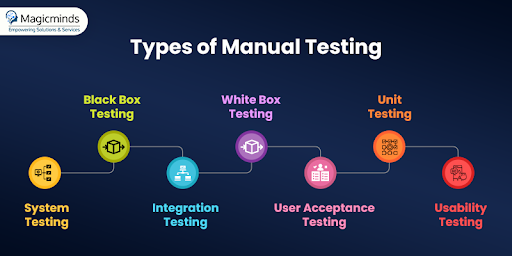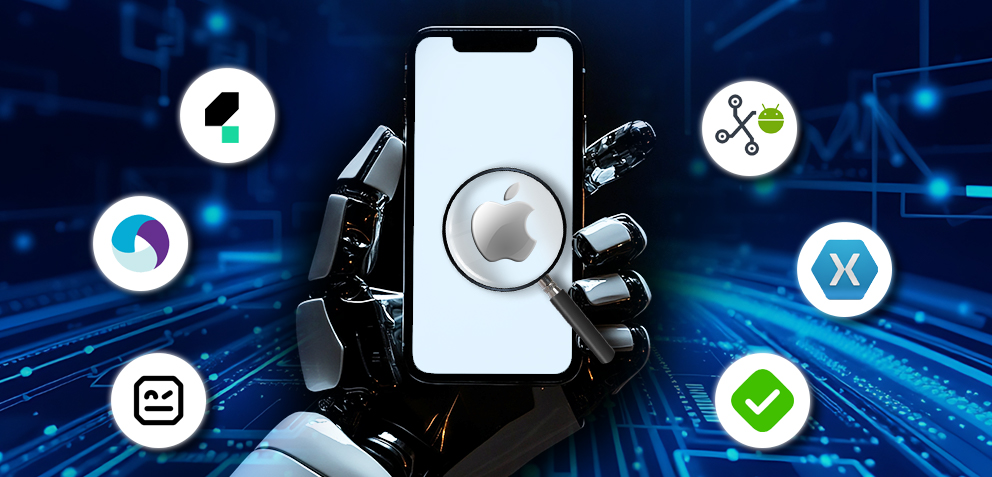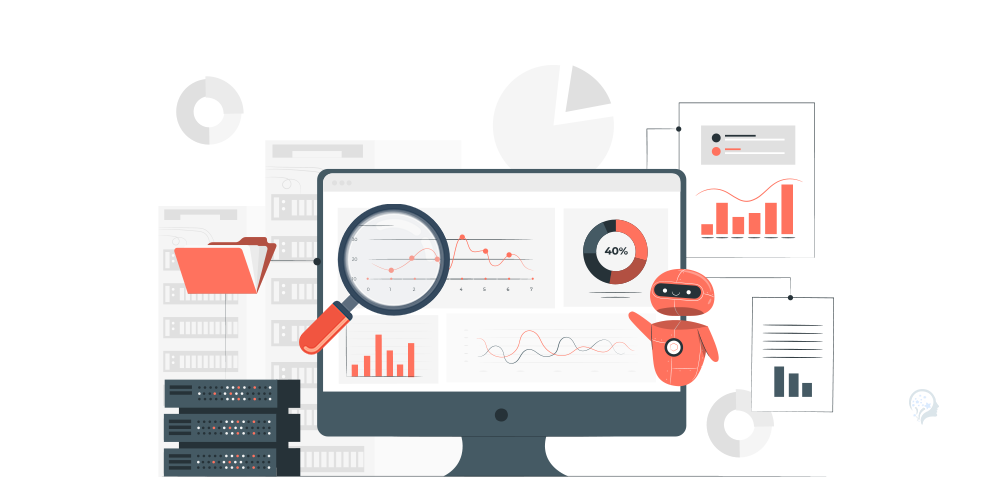The Ultimate Guide to Manual Testing with Proven Best Practices

Table Of Contents
 Stay In-the-loop
Stay In-the-loop
Get fresh tech & marketing insights delivered right to your inbox.
Share this Article
Tags
Category
- .Net Developer
- Adtech
- Android App Development
- API
- App Store
- Artificial Intelligence
- Blockchain Development
- Chatbot Development
- CMS Development
- Cybersecurity
- Data Security
- Dedicated Developers
- Digital Marketing
- Ecommerce Development
- Edtech
- Fintech
- Flutter app development
- Full Stack Development
- Healthcare Tech
- Hybrid App Development
- iOS App Development
- IT Project Management
- JavaScript development
- Laravel Development
- Magento Development
- MEAN Stack Developer
- MERN Stack Developer
- Mobile App
- Mobile App Development
- Nodejs Development
- Progressive Web Application
- python development
- QA and testing
- Quality Engineering
- React Native
- SaaS
- SEO
- Shopify Development
- Software Development
- Software Outsourcing
- Staff Augmentation
- UI/UX Development
- Web analytics tools
- Wordpress Development
Do you know manual testing still accounts for 80% of testing in the realm of AI and automation? Sounds interesting, right? We also think so.
Being an integral part of software quality assurance (QA), manual testing enables testers to engage with the software like an end-user does. So, what does manual testing incorporate?
Manual testing is a process in the software development cycle in which testers accomplish test cases manually. This approach allows human testers to thoroughly test software’s functionality, usability, and compatibility to identify any errors early. However, this must rigorously follow manual testing best practices, ensuring premier software quality.
In this article, we will explore the manual testing best practices for enhanced software quality and user experience. So, without further ado, let’s get started.
Software Testing Industry Statistics At a Glance
The software industry is the guardian of any application and system’s reliability, security, compatibility, and usability. So, Below are a few statistics to support this.
- The software testing industry has disrupted the $45 billion milestone in market size.
- The software testing market is growing at a CAGR of 5% from 2023 to 2027.
- The global software testing market is projected to reach $109.5 billion by 2027.
- Quality Assurance (QA) is taking center stage in development budgets, with an expected allocation of approximately 40% of the overall cost.
Why Is Software Testing Mandatory?
Before we delve deep into the manual testing best practices, let’s have a look at the importance of manual testing. To put it simply, manual testing is extremely essential to meet customer and user experience and satisfaction with decreased cost and error-free software. With manual testing, you can validate whether the requirements meet the goals, adding flexibility and adaptability while eliminating the need for automation tools.
Check the below-mentioned importance of manual testing.
- Adaptable: Manual testing enables testers to discover potential bugs easily.
- Effective: With the right manual testing services, test results can be efficient and effective.
- Human Insight: Manual testing enables human insight and intuition for applications that analyze subtle issues that automated tests might not cover.
- Exploratory Testing: This is vital for exploring the application without predefined test cases and discovering unexpected issues.
- Early Detection of Usability Issues: This testing can identify usability issues early in development, ensuring user satisfaction.
- Immediate Feedback: Manual testers provide immediate feedback on the application’s functionality and performance
- Understanding Complex Scenarios: This testing is crucial for understanding and testing complex scenarios that require a human touch.
- Cost-Effective for Small Projects: Manual testing has proven to be more cost-effective for smaller projects than maintaining automated test environments.
- Comprehensive Coverage: Manual testing enables comprehensive coverage, especially for areas that are difficult to automate, like visual elements and user interactions.

What are the Best Practices for Manual Testing?
So, here comes the most important part—the best practices for manual testing. Let’s uncover the essential techniques for achieving top-tier software quality.
1. Strategic Planning
The first thing you must include in your manual testing process is meticulously crafting the plan that enables smooth guidance for involved stakeholders. This follows the SMART techniques (specific, measurable, achievable, relevant, and time-bound) and establishes a seamless and effective communication process.
Additionally, unique goals, measurable metrics, achievable targets, and meeting the deadline should be addressed in the testing plan.
RELATED READ: Mastering API Testing: A Comprehensive Guide to Success
2. Understand the Requirements
Once you’re good to go with the test plan, the most critical step is to acquire a firm grasp on the project requirements. When you have any manual testing service providers, they thoroughly examine your requirements to extract valuable insights. Besides, skilled testers will recognize the obstruction of the test results and include best practices to achieve highest success in manual testing, improving their expertise.
Get Reliable & Human-Driven Testing Solutions for Superior Software Quality
3. Write and Review Test Cases
Testers should produce descriptive written test cases that they will conduct. For that, they must rely on some effective techniques, such as Test Case Design Techniques, to create test cases seamlessly. Besides, test cases should be written in a way that less experienced people can also comprehend.
Furthermore, you should adopt a good approach, such as reviewing the test cases with peers, business analysts, and the development team, to ensure you’ve not missed any test scenarios.
4. Early Integration
Have you heard that “the early bird catches the worm?” This is the ultimate truth you must consider in the software testing realm. Testing in the early stage is extremely essential to providing top-tier software quality to your clients. This method is called ‘shifting left.’ This process ensures that bugs are detected and neutralized in a timely manner, improving user experience. Besides, early bug detection leads to less cost than fixing it once the product reaches the market.
In addition to that, early testing can easily align with strong and advanced methodologies, such as Agile and DevOps. This ensures supreme quality with enhanced flexibility, reliability and seamless collaboration with cross-team.
5. Combine Multiple Test Types
Software development consists of several layers, so testers must meticulously verify each layer. QA efficiency should amalgamate multiple testing types and levels for maximized software quality and performance. Besides, testers must include functional, unit, integration, etc., testing from multiple angles, ensuring top-notch functionality.
Additionally, indulging in non-functional testing, such as performance, usability, regression, and reliability, is paramount. Moreover, security testing is also crucial nowadays due to the increasing number of cyber threats, protecting the software from any vulnerability exposure. Embracing the broad spectrum of testing types can empower the software entirely, providing supreme-quality assurance.
6. Document Test Results
Having a comprehensive document of testing results is cornerstone for accelerated manual testing. For that, include bug resolution and discovered issues screenshots and maintain an expected results description with the proposed solutions for bug neutralization. This process can mitigate risks of misinterpretation and promote a smooth manual testing process.
READ MORE: Crowd-Sourced Testing 101: A Game-Changer for QA
7. End-to-End Test Coverage
Believe us, manual testing is more than functionality testing to add several dimensions to an API or application. It incorporates testing multiple aspects, like UI/UX design, performance, and security. Do prioritize different dimensions to unlock potential bugs that may affect software’s performance, ensuring top-tier software quality and improved user experience.
8. Real-Time Device Testing
We can’t overstate the importance of real-device testing for end-user experience accuracy. Although honestly, we can’t deny the efficiency of simulators or emulators for creating real-world scenarios for testing, we can’t overlook the fact that they cannot replicate the real-time end-user experience.
Having said that, testing in real-time environments, such as low battery levels, slow internet, network issues, and pop-ups, is vital to handling errors hassle-free. Moreover, conducting tests on multiple real devices empowers you to detect and resolve issues quickly before the software’s market launch.
9. Skill-based Task Distribution
Although seamless collaboration and communication between the team is paramount in testing, however, acknowledging and learning multiple skills within the team is equally vital. So, definitely distribute tasks depending on individual team member’s skills and expertise. This approach ensures every member’s contribution to the testing process with enhanced efficiency.
Let us give you an example for more clarity. For example, QA testers with scripting language expertise are good at writing test scripts, but non-technical teams can manage keyword-driven testing.
10. Report Bugs Timely
Do you know that 47% of testers prefer bug reporting? Yes, you heard right. Practicing timely bug reporting is one of the core fundamentals of the manual testing process. This not only ensures that bugs are identified but also resolved effectively. Raise a flag once you discover a bug and categorize it based on its severity. Like tests prioritize high-level risk areas, bugs must be classified depending on the impact of software functionality.
Moreover, you can master the art of bug reporting with an effective and seamless communication process. To achieve that, conduct regular team meetings, prevent bugs from slipping through the cracks, foster growth, and streamline testing workflow.
Discover Hidden Bugs with Our Robust Manual Testing Services!
Contact Us!11. Embrace Reusability
Another striking manual testing technique is to follow a modular approach. This enables you to write and maintain individual features, reusability, and error discoverability for individual cases. And how does it help developers? Well, they can identify and separate specific feature errors, maintaining a streamlined and simple debugging approach.
ALSO READ: Manual vs Automated Testing: What’s Best for You?
Revolutionize Your Manual Testing Game with Magicminds!
Including these manual testing best practices is essential to accelerating the software development lifecycle. Adhering to these best practices can significantly improve software quality while saving costs and increasing customer satisfaction. However, if you need expert help with manual testing, get in touch with us.
At Magicminds, we’re committed to delivering top-notch, bug-free software that not only meets your goals but exceeds your expectations. Our robust manual testing services include localization testing, functional testing, usability testing, and more. Our experts follow a meticulous process to ensure software reliability and efficiency.
Loud & Proud: Our Number Speaks For Us
- 40% Accelerate Development
- 88% Bug Reduction
- 95% Test Increasement
- 65% Cost Reduction Compared to Outsourced Testing Services
- 45% Time-to-Market Improvement for Projects
- 70% Project Quality Enhancement
Don’t go with the numbers only. Experience our state-of-the-art manual testing services by yourself. Connect with us.
Do you know manual testing still accounts for 80% of testing in the realm of AI and automation? Sounds interesting, right? We also think so.
Being an integral part of software quality assurance (QA), manual testing enables testers to engage with the software like an end-user does. So, what does manual testing incorporate?
Manual testing is a process in the software development cycle in which testers accomplish test cases manually. This approach allows human testers to thoroughly test software’s functionality, usability, and compatibility to identify any errors early. However, this must rigorously follow manual testing best practices, ensuring premier software quality.
In this article, we will explore the manual testing best practices for enhanced software quality and user experience. So, without further ado, let’s get started.
| Table of Content
Why Is Software Testing Mandatory?
What are the Best Practices for Manual Testing?
Revolutionize Your Manual Testing Game with Magicminds! |
Software Testing Industry Statistics At a Glance
The software industry is the guardian of any application and system’s reliability, security, compatibility, and usability. So, Below are a few statistics to support this.
- The software testing industry has disrupted the $45 billion milestone in market size.
- The software testing market is growing at a CAGR of 5% from 2023 to 2027.
- The global software testing market is projected to reach $109.5 billion by 2027.
- Quality Assurance (QA) is taking center stage in development budgets, with an expected allocation of approximately 40% of the overall cost.
Why Is Software Testing Mandatory?
Before we delve deep into the manual testing best practices, let’s have a look at the importance of manual testing. To put it simply, manual testing is extremely essential to meet customer and user experience and satisfaction with decreased cost and error-free software. With manual testing, you can validate whether the requirements meet the goals, adding flexibility and adaptability while eliminating the need for automation tools.
Check the below-mentioned importance of manual testing.
- Adaptable: Manual testing enables testers to discover potential bugs easily.
- Effective: With the right manual testing services, test results can be efficient and effective.
- Human Insight: Manual testing enables human insight and intuition for applications that analyze subtle issues that automated tests might not cover.
- Exploratory Testing: This is vital for exploring the application without predefined test cases and discovering unexpected issues.
- Early Detection of Usability Issues: This testing can identify usability issues early in development, ensuring user satisfaction.
- Immediate Feedback: Manual testers provide immediate feedback on the application’s functionality and performance
- Understanding Complex Scenarios: This testing is crucial for understanding and testing complex scenarios that require a human touch.
- Cost-Effective for Small Projects: Manual testing has proven to be more cost-effective for smaller projects than maintaining automated test environments.
- Comprehensive Coverage: Manual testing enables comprehensive coverage, especially for areas that are difficult to automate, like visual elements and user interactions.
What are the Best Practices for Manual Testing?
So, here comes the most important part.
-
Strategic Planning
The first thing you must include in your manual testing process is meticulously crafting the plan that enables smooth guidance for involved stakeholders. This follows the SMART techniques (specific, measurable, achievable, relevant, and time-bound) and establishes a seamless and effective communication process.
Additionally, unique goals, measurable metrics, achievable targets, and meeting the deadline should be addressed in the testing plan
RELATED READ: Mastering API Testing: A Comprehensive Guide to Success
-
Understand the Requirements
Once you’re good to go with the test plan, the most critical step is to acquire a firm grasp on the project requirements. When you have any manual testing service providers, they thoroughly examine your requirements to extract valuable insights. Besides, skilled testers will recognize the obstruction of the test results and include best practices to achieve highest success in manual testing, improving their expertise.
| Get Reliable & Human-Driven Testing Solutions for Superior Software Quality Share Your Project Requirements! |
-
Write and Review Test Cases
Testers should produce descriptive written test cases that they will conduct. For that, they must rely on some effective techniques, such as Test Case Design Techniques, to create test cases seamlessly. Besides, test cases should be written in a way that less experienced people can also comprehend.
Furthermore, you should adopt a good approach, such as reviewing the test cases with peers, business analysts, and the development team, to ensure you’ve not missed any test scenarios.
-
Early Integration
Have you heard that “the early bird catches the worm?” This is the ultimate truth you must consider in the software testing realm. Testing in the early stage is extremely essential to providing top-tier software quality to your clients. This method is called ‘shifting left.’ This process ensures that bugs are detected and neutralized in a timely manner, improving user experience. Besides, early bug detection leads to less cost than fixing it once the product reaches the market.
In addition to that, early testing can easily align with strong and advanced methodologies, such as Agile and DevOps. This ensures supreme quality with enhanced flexibility, reliability and seamless collaboration with cross-team.
-
Combine Multiple Test Types
Software development consists of several layers, so testers must meticulously verify each layer. QA efficiency should amalgamate multiple testing types and levels for maximized software quality and performance. Besides, testers must include functional, unit, integration, etc., testing from multiple angles, ensuring top-notch functionality.
Additionally, indulging in non-functional testing, such as performance, usability, regression, and reliability, is paramount. Moreover, security testing is also crucial nowadays due to the increasing number of cyber threats, protecting the software from any vulnerability exposure. Embracing the broad spectrum of testing types can empower the software entirely, providing supreme-quality assurance.
-
Document Test Results
Having a comprehensive document of testing results is cornerstone for accelerated manual testing. For that, include bug resolution and discovered issues screenshots and maintain an expected results description with the proposed solutions for bug neutralization. This process can mitigate risks of misinterpretation and promote a smooth manual testing process.
READ MORE: Crowd-Sourced Testing 101: A Game-Changer for QA
-
End-to-End Test Coverage
Believe us, manual testing is more than functionality testing to add several dimensions to an API or application. It incorporates testing multiple aspects, like UI/UX design, performance, and security. Do prioritize different dimensions to unlock potential bugs that may affect software’s performance, ensuring top-tier software quality and improved user experience.
-
Real-Time Device Testing
We can’t overstate the importance of real-device testing for end-user experience accuracy. Although honestly, we can’t deny the efficiency of simulators or emulators for creating real-world scenarios for testing, we can’t overlook the fact that they cannot replicate the real-time end-user experience.
Having said that, testing in real-time environments, such as low battery levels, slow internet, network issues, and pop-ups, is vital to handling errors hassle-free. Moreover, conducting tests on multiple real devices empowers you to detect and resolve issues quickly before the software’s market launch.
-
Skill-based Task Distribution
Although seamless collaboration and communication between the team is paramount in testing, however, acknowledging and learning multiple skills within the team is equally vital. So, definitely distribute tasks depending on individual team member’s skills and expertise. This approach ensures every member’s contribution to the testing process with enhanced efficiency.
Let us give you an example for more clarity. For example, QA testers with scripting language expertise are good at writing test scripts, but non-technical teams can manage keyword-driven testing.
-
Report Bugs Timely
Do you know that 47% of testers prefer bug reporting? Yes, you heard right. Practicing timely bug reporting is one of the core fundamentals of the manual testing process. This not only ensures that bugs are identified but also resolved effectively. Raise a flag once you discover a bug and categorize it based on its severity. Like tests prioritize high-level risk areas, bugs must be classified depending on the impact of software functionality.
Moreover, you can master the art of bug reporting with an effective and seamless communication process. To achieve that, conduct regular team meetings, prevent bugs from slipping through the cracks, foster growth, and streamline testing workflow.
| Discover Hidden Bugs with Our Robust Manual Testing Services! Connect With Us |
-
Embrace Reusability
Another striking manual testing technique is to follow a modular approach. This enables you to write and maintain individual features, reusability, and error discoverability for individual cases. And how does it help developers? Well, they can identify and separate specific feature errors, maintaining a streamlined and simple debugging approach.
ALSO READ: Manual vs Automated Testing: What’s Best for You?
Revolutionize Your Manual Testing Game with Magicminds!
Including these manual testing best practices is essential to accelerating the software development lifecycle. Adhering to these best practices can significantly improve software quality while saving costs and increasing customer satisfaction. However, if you need expert help with manual testing, get in touch with us.
At Magicminds, we’re committed to delivering top-notch, bug-free software that not only meets your goals but exceeds your expectations. Our robust manual testing services include localization testing, functional testing, usability testing, and more. Our experts follow a meticulous process to ensure software reliability and efficiency.
Loud & Proud: Our number speaks for us
- 40% Accelerate Development
- 88% Bug Reduction
- 95% Test Increasement
- 65% Cost Reduction Compared to Outsourced Testing Services
- 45% Time-to-Market Improvement for Projects
- 70% Project Quality Enhancement
Don’t go with the numbers only. Experience our state-of-the-art manual testing services by yourself. Book a Free Consultation.


